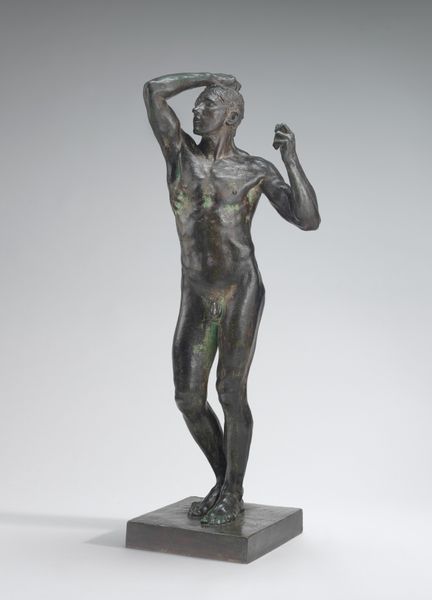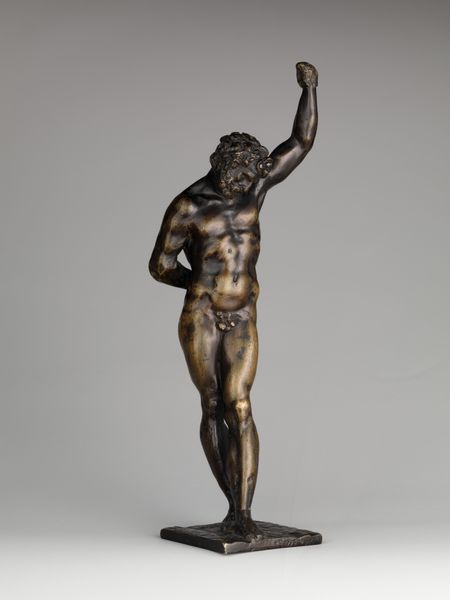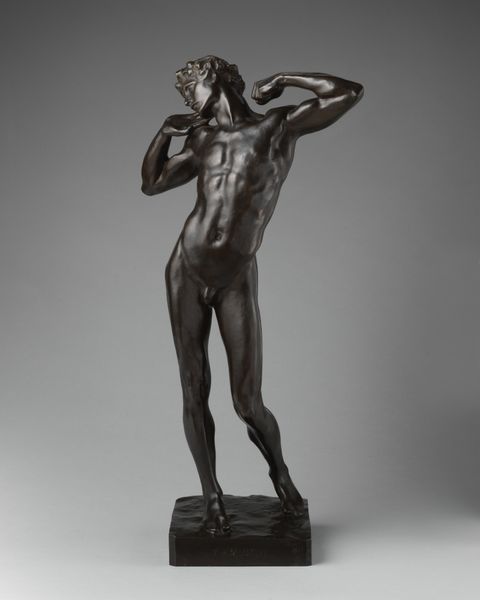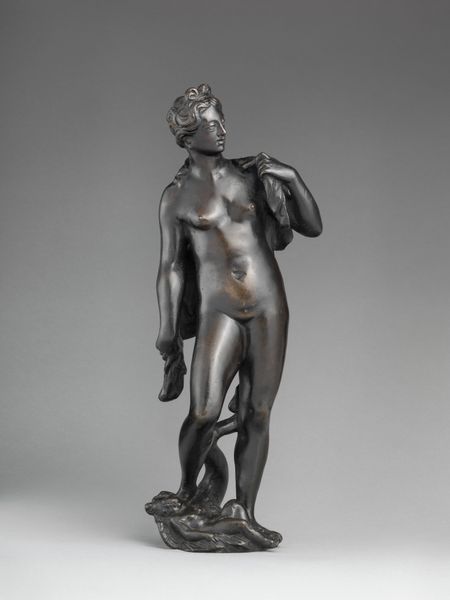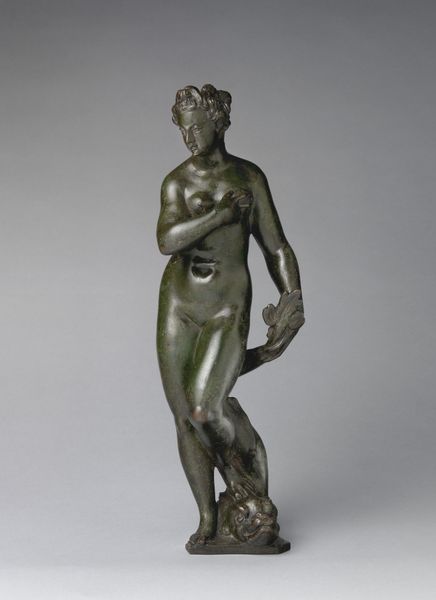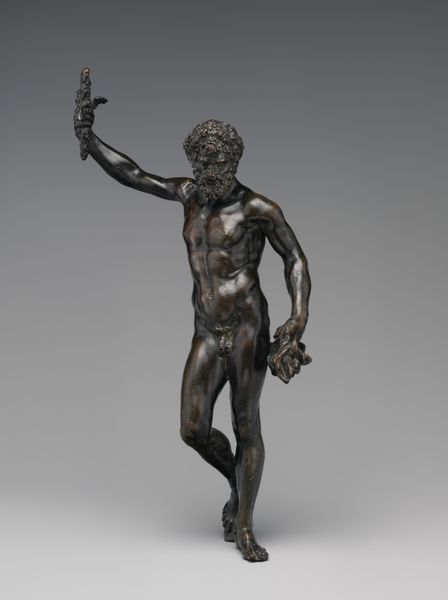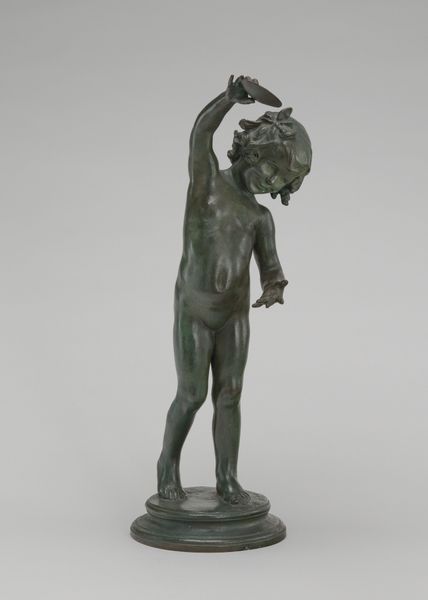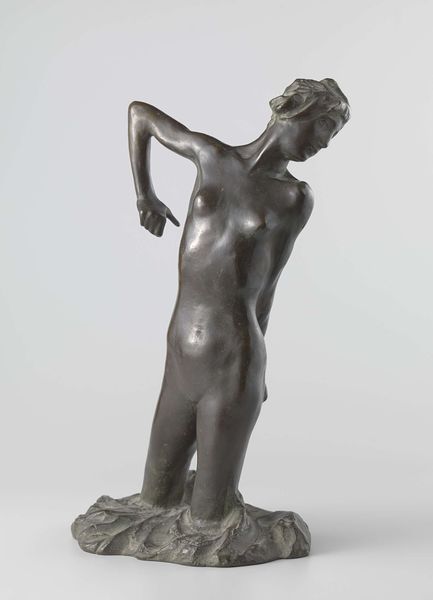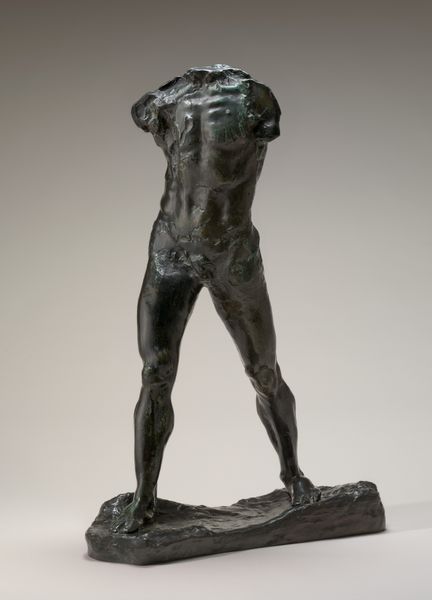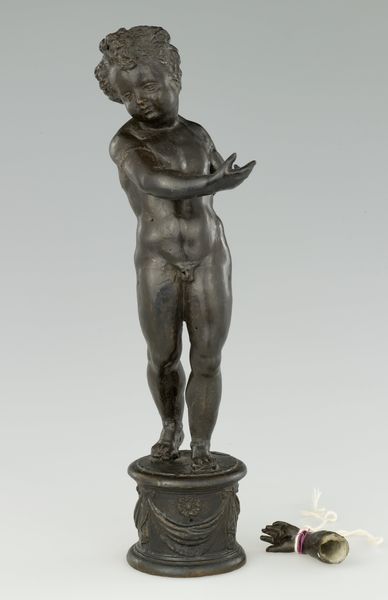
Dimensions: Overall (wt. confirmed): 72 in., 275 lb. (182.9 cm, 124.7 kg)
Copyright: Public Domain
Editor: So, this is "The Age of Bronze" by Auguste Rodin, conceived between 1876 and 1911. It's a bronze sculpture, and I have to say, the pose is quite striking. There's something almost…melancholy about it. What do you see in this piece, its historical symbols? Curator: This piece pulsates with symbolic weight. At first glance, its original title was 'The Vanquished', imbuing this figure with a heavy layer of defeat, both physical and perhaps spiritual. Consider how Rodin deliberately echoed classical forms, yet instilled them with such raw emotion, such visible struggle. That's a potent combination. Notice the extended arm: what historical memory might be attached? Editor: You mention raw emotion. To me, it feels like an awakening. Maybe an Adam figure expelled from Eden? What's the meaning of this ambiguous imagery? Curator: Precisely! This piece triggered controversy because of its realism; some assumed Rodin had cast it directly from a model. The gesture – reaching, questioning – became emblematic of humanity's transition, its 'bronze age' perhaps implying both technological advancement and a fall from grace. And that stance; slightly off-kilter…does that suggest other iconic memories to you? Editor: Now that you point it out, I see what you mean, I missed so many details when I initially viewed it! Curator: These ambiguous figures ask a central question – the price of our achievements? We're caught between progress and what is sacrificed in its wake. We can think about war. We are left wondering the effect of constant conflict on generations. Editor: Thank you! This artwork holds such depth in history and technique. The figure’s tension suddenly makes more sense to me, given the multiple cultural contexts it's drawn from.
Comments
No comments
Be the first to comment and join the conversation on the ultimate creative platform.
